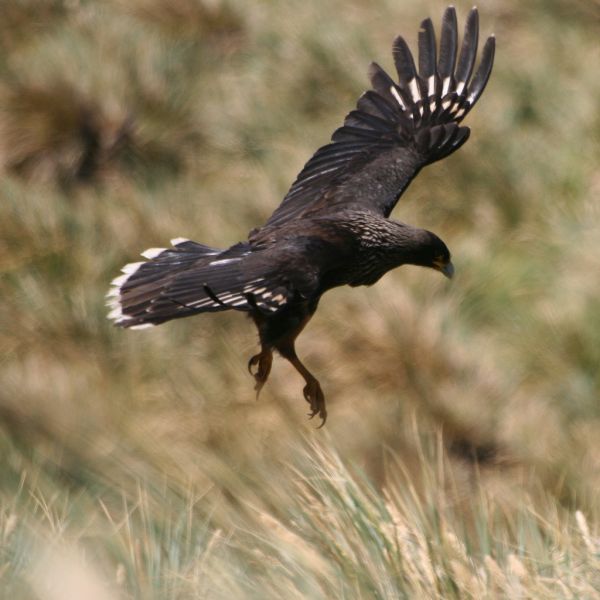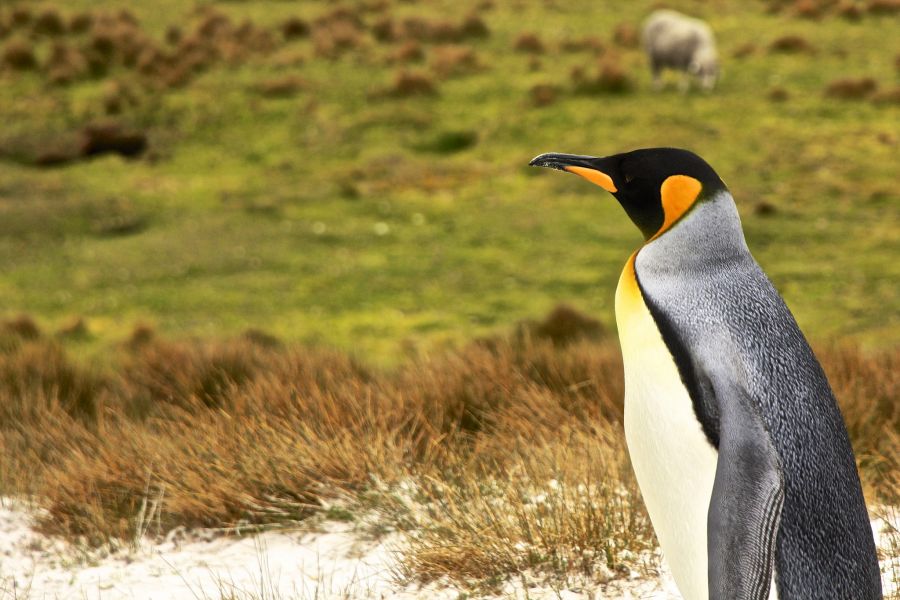Gerard VK4BGL/G3WIP will be active as VP8DPD from Falkland Islands, IOTA SA-002, 10 May - 12 July 2025.
He will operate on HF Bands.
Recent DX Spots VP8DPD
QSL via G3WIP buro, LOTW, eQSL.
The Falkland Islands – islands of contention
The Falkland Islands archipelago, covering an area of over 12,100 km², is located in the southern Atlantic Ocean, 450 km east of the coast of Argentina. It consists of two large islands and over 770 smaller rocky formations.
This harsh land with a fairly cool, oceanic climate attracted whalers in ancient times and is now a British overseas territory. For more than two centuries, there has been a territorial dispute between the United Kingdom and Argentina over the right to call the Falkland Islands their own.

Falkland wings. Author - John Dalkin.
Turmoil in the South Atlantic
When the English arrived in the Falkland Islands in 1591, they found no permanent settlements and hastened to declare the land the property of the English crown. They were soon challenged by the Spanish, who claimed the islands for themselves.
In 1764, the French navigator Louis de Bougainville founded a settlement on the eastern edge of the archipelago. At the same time, the British began to explore the western tip of the Falklands and established a colony there. Neither side was aware of the other's existence, but everything changed three years later when Spain decided to buy Bougainville's possessions and appoint its own governor to the islands. This resulted in the storming of the English Port Egmont and the expulsion of the redcoats. A year later, the parties signed a peace treaty, but did not renounce their claims.
In 1774, the British were forced to leave the Falkland Islands, and until 1811, the Spanish were the sole rulers of these territories. However, they soon left the archipelago as well. Argentina, which gained independence from the Spanish crown in 1816, declared the Falklands its territory and sent a new governor there in 1832. The local settlers rebelled and killed him, and a year later the British landed on the islands and restored their colony.
 King Penguin, Falkland Islands. Author - Mone Loe.
King Penguin, Falkland Islands. Author - Mone Loe.
Naval squadrons on the horizon
During World War I, a naval battle took place near the archipelago between German cruisers and British battleships. As a result, the German ships were sunk, the squadron commander, Vice Admiral Spee, was killed, and British naval communications in the South Atlantic were restored.
During World War II, Allied ships were repaired and refueled on the islands. In 1982, Argentine troops landed on the Falklands. This forced the British to send their naval forces there. During a brief skirmish, the Argentines were expelled from the islands. Today, Argentina continues to consider them its territory, calling the archipelago the Malvinas. Interestingly, in 2013, more than 99% of the local population voted to keep the Falklands as an overseas territory of the United Kingdom.
 King Penguin chicks at Volunteer Point, Falkland Islands. Author - Hector.
King Penguin chicks at Volunteer Point, Falkland Islands. Author - Hector.
Icebergs and morning fog
The climate on the islands is shaped by cold currents carrying water from the Antarctic coast further north to the La Plata Gulf. Small icebergs can sometimes be seen near the coastline. The average annual temperature is +6-7 °C. Strong westerly winds often blow here, and the proximity of the ocean creates conditions for fog to form over the islands. Precipitation during the year is about 600 mm. Most of it falls on East Falkland, as the western parts of the archipelago are quite arid.
The archipelago's coastline is very indented. Numerous fjords cut deep into the land, forming bays into which small streams flow. There are no large rivers on the islands. The highest hill, Usborne (704 m), is located in the eastern part. The flora of the Falklands consists of meadow grasses, ferns, heather, and more than 260 species of flowering plants.
Land of sheep
There are no large animals on the islands. Local foxes were exterminated by settlers in the 19th century. Black-browed albatrosses nest on the coastal cliffs, and there are a few penguin colonies. There are about 7 species of fish and 15 species of marine mammals in the ocean waters. There are no reptiles, and the entire archipelago is a veritable sheep pasture. In the 19th century, settlers from Europe brought sheep to the islands for wool, meat, and milk. Today, the animals have multiplied so much that there are more than 170 sheep per Falkland Islander. There are about half a million of them here.
Descendants of whalers
Less than 3,000 people live on the islands, mostly in the only settlement, Port Stanley, located on the eastern island. The locals are descendants of whalers and sailors. The English, Norwegians, and Chileans communicate mainly in English and Spanish. The main occupations of the islanders are fishing and sheep farming, with the wool being exported to England. Oil and gas exploration is underway on the continental shelf. There are two seaports and an airport on the archipelago, and ferries carry residents and cargo between the largest islands.
The Falkland Islands – islands of discord, land of morning mists and fine-wool sheep!

